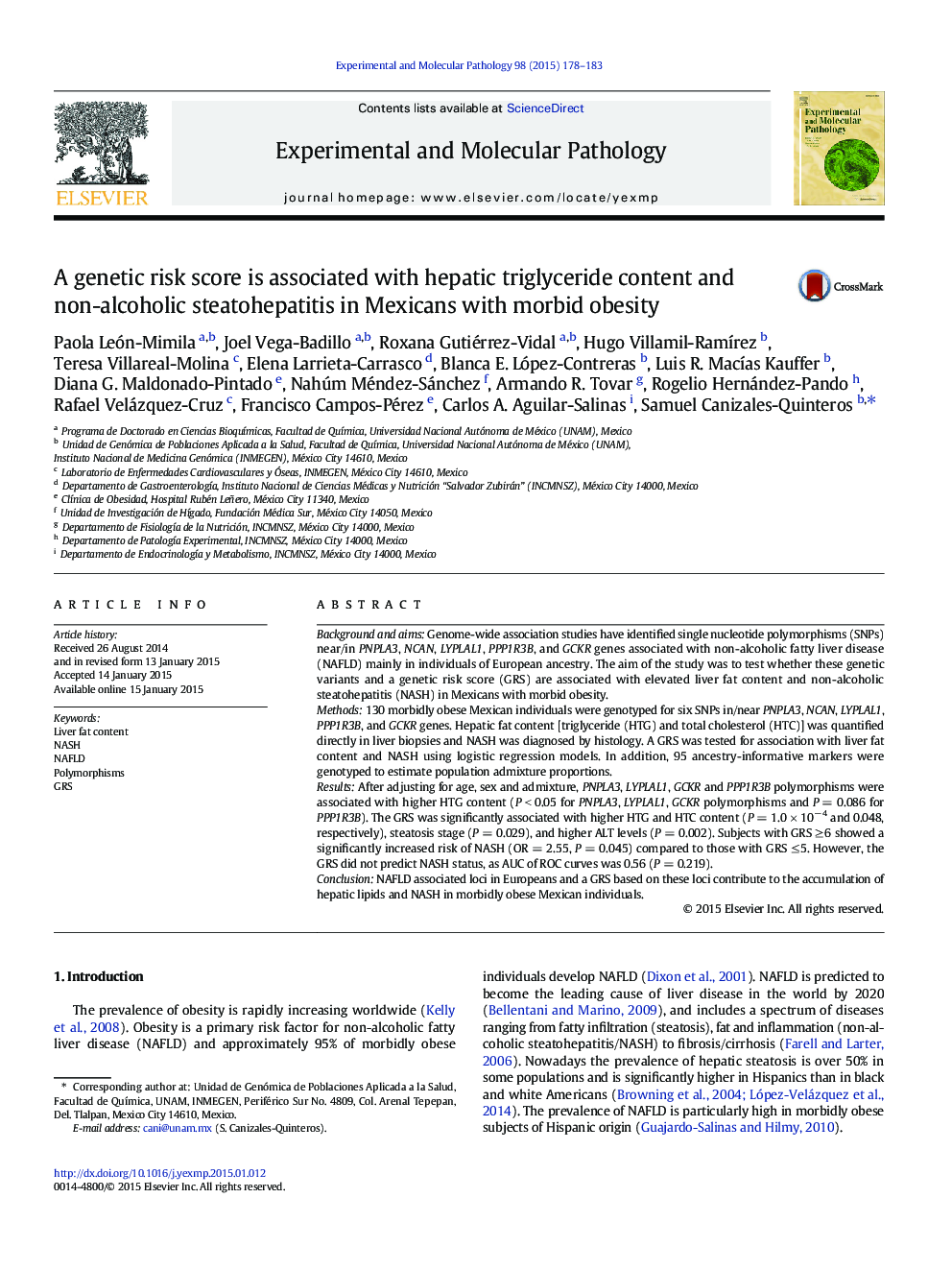| Article ID | Journal | Published Year | Pages | File Type |
|---|---|---|---|---|
| 2774930 | Experimental and Molecular Pathology | 2015 | 6 Pages |
Background and aimsGenome-wide association studies have identified single nucleotide polymorphisms (SNPs) near/in PNPLA3, NCAN, LYPLAL1, PPP1R3B, and GCKR genes associated with non-alcoholic fatty liver disease (NAFLD) mainly in individuals of European ancestry. The aim of the study was to test whether these genetic variants and a genetic risk score (GRS) are associated with elevated liver fat content and non-alcoholic steatohepatitis (NASH) in Mexicans with morbid obesity.Methods130 morbidly obese Mexican individuals were genotyped for six SNPs in/near PNPLA3, NCAN, LYPLAL1, PPP1R3B, and GCKR genes. Hepatic fat content [triglyceride (HTG) and total cholesterol (HTC)] was quantified directly in liver biopsies and NASH was diagnosed by histology. A GRS was tested for association with liver fat content and NASH using logistic regression models. In addition, 95 ancestry-informative markers were genotyped to estimate population admixture proportions.ResultsAfter adjusting for age, sex and admixture, PNPLA3, LYPLAL1, GCKR and PPP1R3B polymorphisms were associated with higher HTG content (P < 0.05 for PNPLA3, LYPLAL1, GCKR polymorphisms and P = 0.086 for PPP1R3B). The GRS was significantly associated with higher HTG and HTC content (P = 1.0 × 10− 4 and 0.048, respectively), steatosis stage (P = 0.029), and higher ALT levels (P = 0.002). Subjects with GRS ≥ 6 showed a significantly increased risk of NASH (OR = 2.55, P = 0.045) compared to those with GRS ≤ 5. However, the GRS did not predict NASH status, as AUC of ROC curves was 0.56 (P = 0.219).ConclusionNAFLD associated loci in Europeans and a GRS based on these loci contribute to the accumulation of hepatic lipids and NASH in morbidly obese Mexican individuals.
